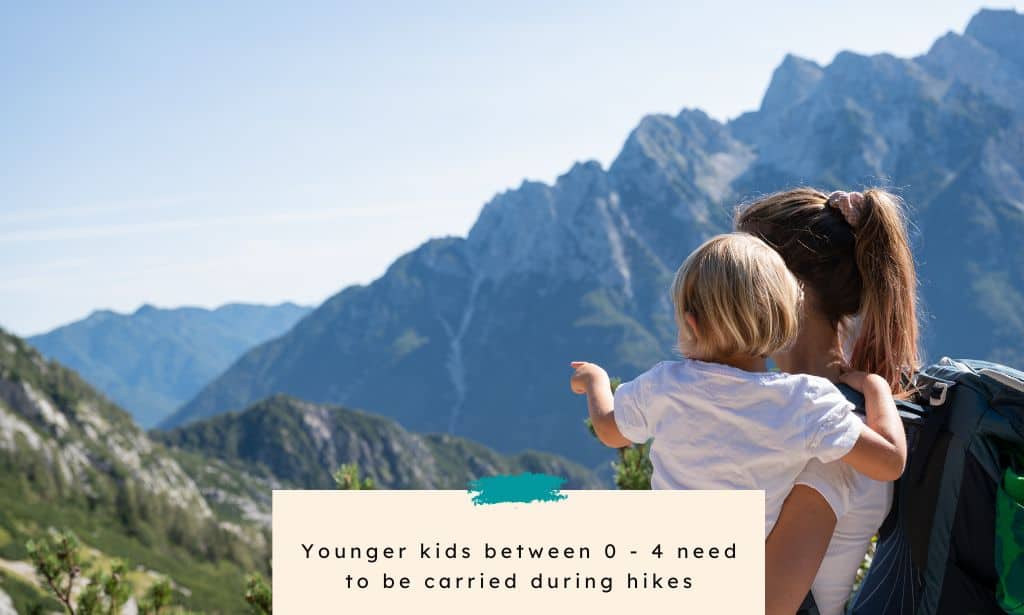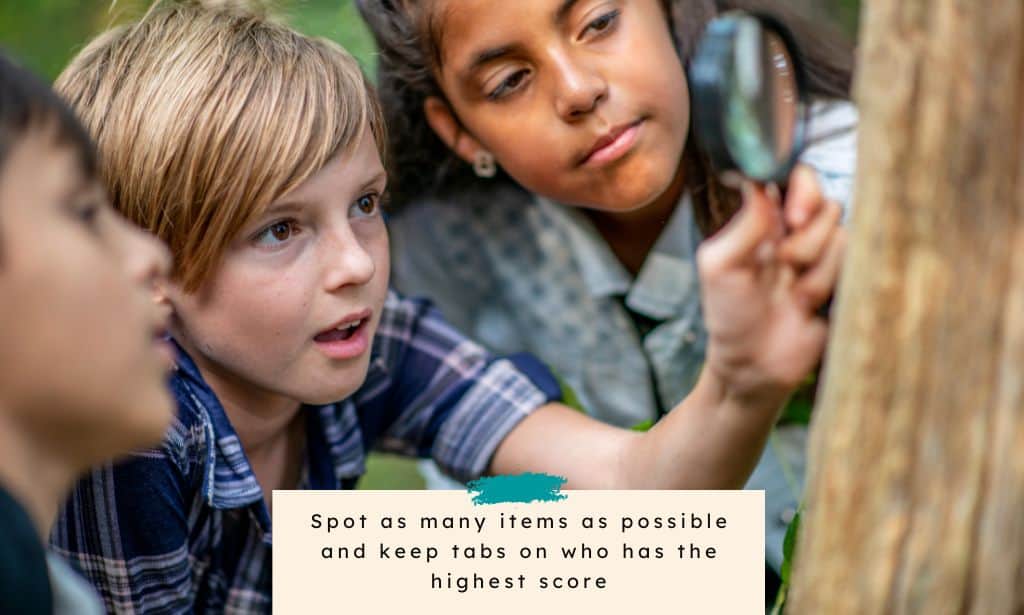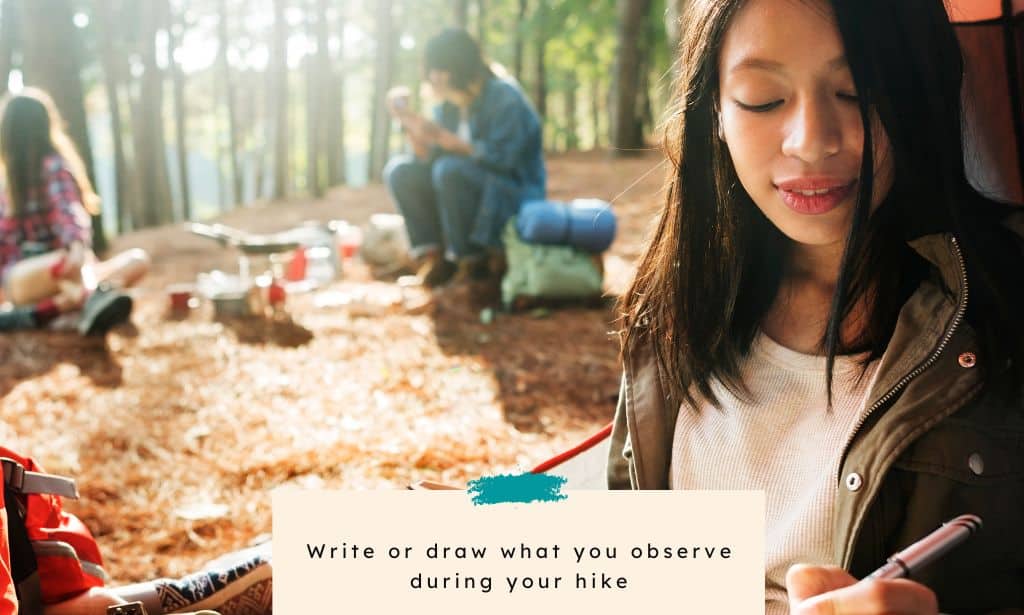Taking your kids on a hike is both exciting and nerve-wracking. You want them to enjoy the hike as much as you do, but sometimes, they can get bored in the middle of it all and want to go home. So, having hiking games is crucial.
A hiking game is an activity you do while hiking to distract yourself or your children and kill boredom. These games keep children motivated and entertained, so they hike longer.
There are many hiking games for kids, including peek-a-book, scavenger hunts, trail songs, and I spy. Pick an age-appropriate hiking game for your kids so it’s relatable and fun. Some of the games I highlight in this article work for us, but others don’t, so pick what you feel will interest your kids the most.
Younger kids (0-3)
At this stage, your child follows your lead because they have no control over what is happening. A stroller is the most important piece of gear while hiking with your bub. Most people prefer the frameless or structured carriers.
Structured carriers are a favorite since they distribute your baby’s weight on your hips, ensuring you are more comfortable during the hike. Other options to consider include slings and wraps.
Although it boils down to your preference, a good baby carrier should be lightweight since you must consider everything else you need to carry. Your child’s age will also help you pick the right baby carrier. For instance, a frameless baby carrier is better if your child can’t sit up yet.
Most kids under 3, sometimes even 4 years old, will need to be carried at some point during the hike, especially if you plan on taking a long hike.

Games you can play include:
1. Peek-a-boo
This old-time classic is best when you take your infant on a hike. While they may spend most of the time sleeping, playing this engaging game will have them giggling and enjoying the hike while awake.
2. Sing trail songs
Kids love music, so exercise your vocal cords and bring the whole group together with a song. You can let your little one pick songs in turns if you have a little group of tots with you. This way, everyone feels included and part of the hike. Singing also lets animals know you are around, so you don’t scare them or them scare your kids.
3. Finish the story
This game is great for younger and older kids. One person starts the story with a single sentence, and everyone else has to add to the story, one sentence at a time. By the end of the story, you will have had a lot of fun and covered some miles without your little ones noticing.
For older kids, make things more interesting by asking them to include what they spot during the hike in the story. Your kids will engage their imagination and use their observational skills all at once.

Toddlers and preschoolers (5-7)
When your kid hits 5, they can take more control of the hike and be ready to walk their feet out. Although they still can’t walk for long periods, you have a better chance of covering more ground with this group. This is especially true if you started taking them on hikes when they were much younger.
Games you can play include:
4. Follow the leader
In this game, one person takes the lead and adds an element to the hike. For instance, add a funny walking style, and everyone must follow. After a few meters, another person takes charge and comes up with their activity. This game keeps things interesting while everyone guesses the next activity.
5. Name the tune
Hum a tune you are sure your toddler knows and ask them to identify the song. As they get older, make the songs more challenging, so they have to work a little harder to identify the song. Take turns with your kids humming, singing, or whistling a tune.
6. Describe what you see
Kids always incorporate their senses when they learn. This is a great opportunity to teach your kids about the different elements in the environment. Pick a few points where you will pause so your little ones can listen for birds, feel textures on different rocks, or note the colors on different flowers. Ask your child to describe what they see and feel.
7. Collect souvenirs
Collecting souvenirs is not a game, but it’s a great way to keep your little one active and engaged. Have your child bring a hiking backpack to store all the interesting things they want to bring back home. It could be anything from flowers, feathers, stones, sticks, or dry leaves.

8. I spy with my little eye
This is another classic game. Commonly played as a car game, I spy can also double up as a hiking game. The spy chooses an object in sight and announces the first letter of the object they have spotted. The hiking crew has to guess what the object is. Of course, everyone takes turns being the spy.
9. Find it
Pick a common item found on the trail. Have your kid count how many items they can spot. It could be something as simple as a yellow flow or more complex as a specific type of tree. Make the game more interesting by promising a reward to whoever spots the most items.
10. When I went shopping, I bought
This simple game keeps your kid’s mind focused during the hike. You can start the game by saying, “When I went shopping, I bought (name an item). The next person will repeat the item you mentioned and add their own. The third person will mention what you said, repeat what the second person said, add an item of their own, and so on.

Preteens and Teens ( 8 years and above)
Preteens and teens have more agility and will go for longer hikes without complaining they are tired. That is, if you can get them out of the house and away from their gadgets. For this age group, the games need to be fun, goofy, and challenging to the mind. Keep it as interesting as possible so they can associate hikes with fun and entertainment. Some of my best picks are:
11. Trivia
Your kids are interested in different things, such as sports, art, and music. Task them in creating trivia questions around these interests. For instance, one person can pick music while another person makes a trivia about sports. Play the trivial game during the hike and keep tabs on who scores the highest.
Some interesting questions include:
- Which musician was commonly known as the man in black?
- Who has the most formula one titles?
- What’s the name of the first super bowl game played in 1967?
12. Hide and seek
Since you aren’t afraid that your preteen or teen will wander off, this game is perfect for keeping things interesting during a hike. Have one person run ahead of the others and hide, either behind a tree, under a rock, or behind a bush. This could be around 10 to 15 feet away from the group.
The group’s task is to find the hider, but to keep things interesting, the hider can try and scare the group. If you choose this option, have some ground rules on what kind of scary stuff you want to include so nobody goes overboard. Keep the game fun, not creepy.
13. The alphabet game
Start by choosing a topic. For instance, a song, city, food, cars, famous people, or movie characters. Start with the letter A and have everyone in the group name something from the topic that starts with the letter A. For instance, if you pick songs, one can mention Ain’t no sunshine, A head full of dreams, and A moment like this.
If following the alphabet is boring and cliche, pick a letter randomly. You can also use a timer where someone has to think of an answer in 10 or 20 seconds. Track who scores the highest points.
14. Word association
One group member will start the game by saying a random word. For example, fast cars. The next person should say something related to the word, in this case, race track. Then the next person will say something associated with the new word, such as fun.
A more advanced version is where kids think of a secret word before the game starts. Once you start, each person should try and steer the others towards their secret word. If you say someone’s secret word or say yours, then they have lost the game.
They will either be out of the game or complete a forfeit. For instance, they can carry two extra bags for 10 mins or cook once you make camp.

15. Nature Journaling
Nature journaling is all about your hiking team recording what they observe and what interests them while on the hike. For younger kids, nature journaling can be guided, but most older kids will appreciate the opportunity to write whatever they want in the journal. Alternatively, your kids can draw, which also has tons of benefits.
Your kids can write about the hike, and if they have a diary, they can take advantage and jot down something during this time. It’s a great way to declutter their minds and destress, all while learning.
16. Read a Map
Everyone has a phone these days, including preteens and teens, so finding directions is a matter of checking an app. However, turn off the GPS and use a map instead. This will challenge the kids and help them practice their navigation skills.
17. Bring a camera
A camera is perfect for capturing moments and keeping the kids busy as they look for the next great shot. To make things interesting, list things the kids need to take pictures of. Think of it like a scavenger hunt with a twist. Make the list as challenging as possible, so your kids have to work harder to spot the items.
Hikes are always better with friends, so if your kids ask if one of their friends can come along, allow them. Make sure you prepare these hiking games in advance so you don’t have to stop and think of what game to play next. If your kids come up with a random game in the middle of the hike, follow their lead. Their ideas may surprise you, and don’t forget to have as much fun as you can.




